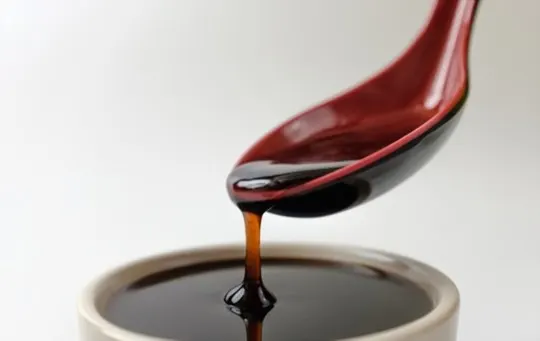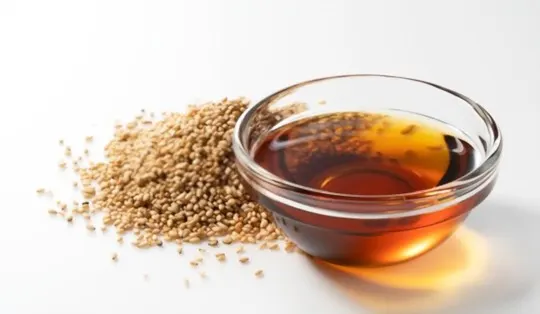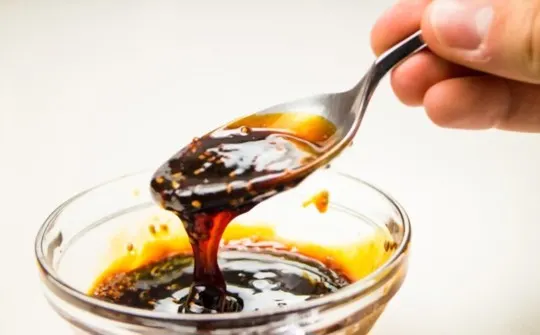Have you ever wondered what the unique flavor of Teriyaki is? Well, you’re not alone.
With its sweet, salty and sour combination, it’s no wonder why the world has embraced this delicious and complex taste.
Whether you’re getting ready to try your first Teriyaki meal or you want to learn more about this timeless classic, this guide will give you all the insight you need.
You won’t believe how easy and enjoyable it is to experience this delightful cuisine.
What is Teriyaki?

Teriyaki is a cooking technique originating from Japan that involves grilling or broiling meats, fish, or vegetables that have been marinated in a blend of soy sauce, sugar, and mirin (a Japanese rice wine).
This technique produces a shiny glaze on the food and imparts a sweet and savory flavor.
However, this heading specifically asks not to talk about the flavor, so let’s focus on what teriyaki is and its origins.
The word “teriyaki” comes from the Japanese words “teri” (meaning luster) and “yaki” (meaning grilled or broiled).
This cooking style was first used in the 17th century by Japanese cooks who glazed fish with a mixture of soy sauce and sweet sake, then broiled it over charcoal.
Nowadays, teriyaki has become a popular cooking method in many parts of the world and is used on a variety of foods, including chicken, beef, tofu, and vegetables.
Its sweet and savory flavor makes it a crowd-pleaser and a great addition to any dish.
Pro tip: Try making your own teriyaki sauce at home by mixing soy sauce, sugar, mirin, and sake in equal parts, and adding ginger and garlic for extra flavor.
What Does Teriyaki Taste Like?

Teriyaki has a distinctive sweet, savory, and slightly tangy flavor profile, making it a popular sauce and marinade in Japanese cuisine.
The sauce is made by combining soy sauce, sugar, mirin, and sake or rice vinegar, which creates a glaze that is used to baste meats, fish, or vegetables while they are being grilled or broiled.
Here are some flavor notes to expect from teriyaki:
- Sweetness from the sugar and mirin.
- Umami taste from the soy sauce.
- A slight tang from the sake or rice vinegar.
- A caramelized and slightly smoky flavor from the grilling or broiling process.
Teriyaki is a versatile sauce that goes well with a wide range of meats, including chicken, beef, pork, and salmon, as well as vegetables like broccoli and bok choy.
It is often served over a bed of rice or alongside a hot bowl of ramen.
Pro-tip: Try experimenting with different proportions of the key ingredients to find the perfect balance of sweetness, acidity, and umami for your taste preferences.
Ingredients that Affect the Taste of Teriyaki Sauce

Teriyaki sauce has a unique flavor profile that results from the combination of several ingredients.
The main ingredients that affect the taste of teriyaki sauce are:
- Soy sauce: which provides a salty and umami flavor to the sauce.
- Mirin: a sweet rice wine that adds sweetness to the sauce.
- Sugar: a sweetener that balances out the sauce’s saltiness, giving it a sweet and savory taste.
- Sake: a Japanese rice wine that enhances the overall flavor.
- Ginger: which adds a subtle spicy and aromatic flavor to the sauce.
- Garlic: which provides a pungent and savory taste to the sauce.
When these ingredients are combined and cooked down to a syrupy consistency, they create the sweet, umami, and savory flavor profile that is characteristic of teriyaki sauce.
Pro Tip: Add some cornstarch to thicken the sauce while cooking it down to a syrupy consistency.
This will help the sauce cling better to the food and give it a glossy appearance.
1 – Soy Sauce
Soy sauce is a key ingredient in teriyaki sauce that gives it its distinct umami flavor.
Teriyaki sauce is a popular Japanese condiment that is used as a marinade and a sauce for meats, vegetables, and seafood.
Here’s everything you need to know about the taste of teriyaki:
- Sweet and Salty – Teriyaki sauce has a distinct sweet and salty taste that comes from the combination of soy sauce, sugar, and mirin (a sweet rice wine).
- Umami Flavor – The soy sauce in teriyaki sauce gives it a rich and savory umami flavor. This flavor is often described as meaty, brothy, or savory.
- Variations – There are many variations of teriyaki sauce, including spicy, citrusy, and fruity varieties. Some recipes also add garlic, ginger, or sesame oil for added flavor.
- Mouthfeel – When applied to food, teriyaki sauce can create a sticky and slightly thick glaze that coats the surface of the food.
Pro Tip: For a more intense teriyaki flavor, marinate your protein in the sauce for several hours or even overnight.
And remember, a little goes a long way when it comes to teriyaki sauce.
2 – Sweetener
Teriyaki sauce is a combination of salty, sweet, and savory flavors that work together to create a delicious umami taste.
A key ingredient in teriyaki sauce is a sweetener, which can be sugar, honey, or other types of syrups.
Depending on the type of sweetener used, teriyaki sauce can taste slightly different.
For example, if you use honey as a sweetener, it will add a floral, slightly fruity taste to the sauce.
If you use brown sugar, it will add a rich, caramel-like flavor.
Other common ingredients in teriyaki sauce include soy sauce, mirin, ginger, and garlic, which all lend their own unique flavors and aromas to the sauce.
Teriyaki sauce can be used as a marinade, glaze, or dipping sauce for a variety of proteins and vegetables, including chicken, beef, salmon, tofu, and asparagus.
It is also commonly used in stir-fry dishes and noodle bowls.
Pro tip: To add an extra layer of flavor to your teriyaki sauce, try using a combination of sweeteners, such as honey and brown sugar, or maple syrup and molasses.
3 – Mirin or Sake

Mirin or sake is a crucial ingredient in teriyaki sauce, without which the dish loses its unique taste and aroma.
Teriyaki sauce is a staple in Japanese cuisine and is used as a glaze, marinade, or dipping sauce.
It is known for its sweet and salty flavor and a hint of umami.
Here are the primary ingredients in teriyaki sauce and how they affect the taste:
- Soy sauce: adds saltiness and umami.
- Mirin or Sake: adds sweetness and a subtle alcohol flavor.
- Sugar or honey: adds sweetness and helps to caramelize the sauce when cooked.
- Rice vinegar: adds a slight tang and balances out the sweetness.
- Garlic and ginger: adds pungency and a unique aroma.
Pro tip: For a richer teriyaki sauce, use sake instead of mirin.
Sake has a higher alcohol content and adds depth to the taste.
4 – Ginger and Garlic
Ginger and garlic are two key ingredients in teriyaki sauce, contributing to the unique and complex flavor profile that this sauce is known for.
Ginger has a sweet and slightly spicy taste that adds warmth and depth to teriyaki sauce.
Its zesty flavor also complements the umami taste of soy sauce, another key ingredient in teriyaki sauce.
Garlic, on the other hand, contributes a pungent and slightly sweet flavor to teriyaki sauce.
It also has a savory and earthy taste that complements the sweetness of the sauce.
Together, ginger and garlic create a perfect balance of sweet and savory flavors that make teriyaki sauce a popular condiment for a variety of dishes.
Whether you’re using it as a marinade for meats or a dipping sauce for sushi and vegetables, teriyaki sauce is sure to add a burst of flavor to your meal.
5 – Sesame Oil

Sesame oil, also known as gingelly oil, is an edible oil made from sesame seeds.
It is commonly used in Asian cuisine and has a distinctive nutty flavor that can enhance the taste of any dish.
When used in small amounts, sesame oil can add richness and depth to your teriyaki sauce.
What Does Teriyaki Taste Like? Teriyaki is a sweet and savory sauce commonly used in Japanese cuisine.
It has a syrupy consistency and a distinct umami flavor that comes from the combination of soy sauce, sugar, and mirin.
The sauce can vary in taste depending on the recipe, but you can generally expect it to have notes of sweetness, saltiness, and tanginess.
When used on grilled meat or seafood, teriyaki sauce can create a caramelized glaze that is both flavorful and visually appealing.
Pro Tip: To enhance the flavor of your teriyaki sauce, try adding a small amount of sesame oil during the cooking process.
The nutty taste of sesame oil can complement the umami flavors in the sauce and create a complex but well-balanced taste.
However, be careful not to add too much sesame oil as it can overpower the other flavors in the sauce.
6 – Vinegar or Citrus Juice
Teriyaki is a sweet and savory sauce used in Japanese cuisine as a marinade, glaze, or dipping sauce.
Its taste is a balance of umami from soy sauce, sweetness from sugar or honey, and tanginess from vinegar or citrus juice.
Vinegar or citrus juice is added to teriyaki sauce to provide the necessary acidity that helps to balance out the sweetness.
Vinegar, which has a more pungent flavor, is commonly used in traditional teriyaki recipes.
However, citrus juice such as orange, lemon, or pineapple can also be used to add a more subtle and fruity taste to the sauce.
Apart from the basic ingredients, teriyaki sauce can have additional flavors depending on the recipe and the region it comes from.
Some variations include adding sake or mirin, ginger, garlic, or sesame oil for their unique flavors.
Teriyaki sauce can be used to marinate meats, fish, or vegetables before grilling, baking, or sautéing.
It can also be used as a glaze during cooking or as a dipping sauce for sushi, tempura, or other appetizers.
Pro Tip: Store-bought teriyaki sauces may contain artificial flavors and additives.
Making your own teriyaki sauce at home from scratch can give you more control over the ingredients and the taste.
7 – Chili Flakes or Powder
Chili flakes or powder are commonly used in teriyaki sauce to add a spicy kick to the sweet and savory flavor profile.
Teriyaki sauce typically has a rich and umami taste with a slightly sweet and tangy undertone.
Some of the main ingredients in teriyaki sauce include soy sauce, mirin (a sweet rice wine), sugar, garlic, and ginger.
These ingredients combine to create a complex flavor that is both savory and sweet.
Teriyaki sauce is versatile and pairs well with a variety of meats and vegetables, such as chicken and broccoli.
It can be used as a marinade, a glaze, or a dipping sauce.
Additionally, chili flakes or powder can be added to teriyaki sauce to enhance its spiciness and add depth to the flavor.
However, it’s important to use them in moderation to avoid overpowering the other flavors in the sauce.
Pro tip: To make your own teriyaki sauce at home, combine equal parts soy sauce and mirin, along with a tablespoon of sugar, minced garlic and ginger, and a squeeze of lemon juice.
How to Cook with Teriyaki Sauce to Enhance its Flavor?

Teriyaki sauce is a potent and flavourful sauce that adds mouthwatering umami notes to any dish.
Here’s how to cook with teriyaki sauce to enhance its flavor:
- Marinate the protein: Teriyaki sauce works well as a marinade for meat, poultry, and fish. Soak your protein for at least 30 minutes before grilling, roasting or pan-frying to allow the umami flavors to permeate into the meat.
- As a stir fry sauce: Add teriyaki sauce to your stir-fry vegetables or protein. Either cook your protein first, then pour over the teriyaki sauce, or add directly to your vegetables while stir frying.
- As a glaze: Brush teriyaki sauce onto grilled meats or poultry during the last few minutes of cooking to form a glaze.
- As a dipping sauce: Teriyaki sauce works as a delicious dipping sauce for sushi, dumplings, or grilled meats.
Pro tip: If you prefer a thicker sauce, you can add a cornstarch slurry (equal parts cornstarch and water) to the teriyaki sauce while cooking.
Nutritional Value of Teriyaki Sauce

Teriyaki sauce is a popular condiment that adds a sweet and savory flavor to dishes.
Understanding the nutritional value of teriyaki sauce is important for making informed decisions about your diet.
Here is a quick breakdown of the nutritional value of teriyaki sauce:
- Serving Size: 1 tablespoon.
- Calories: 50.
- Total Fat: 0 g.
- Sodium: 690 mg.
- Total Carbohydrates: 12 g.
- Sugars: 11 g.
- Protein: 1 g.
Teriyaki sauce has a high sodium content, which can increase blood pressure and contribute to heart disease.
On the other hand, it is low in fat, making it a healthier alternative to other flavorful condiments such as mayonnaise or ketchup.
Pro tip: When using teriyaki sauce as a marinade, dilute it with water or citrus juice to reduce the overall sodium content.
Variations of Teriyaki Sauce

Teriyaki sauce is a sweet and savory combination of soy sauce, mirin, sugar, and other seasonings.
There are several variations of teriyaki sauce that are just as delicious and versatile.
Here are some popular teriyaki sauce variations and how they differ from the traditional recipe:
- Honey Teriyaki: This variation replaces sugar with honey for a sweeter taste. It also adds garlic for an extra kick of flavor.
- Pineapple Teriyaki: This variation uses pineapple juice instead of mirin for a fruity twist. It pairs well with grilled chicken or pork.
- Spicy Teriyaki: This variation adds red pepper flakes or hot sauce for a spicy kick. It is perfect for stir-fries and as a marinade for seafood.
- Black Pepper Teriyaki: This variation adds freshly ground black pepper for a bold and peppery flavor. It pairs well with beef and as a dipping sauce for grilled meats.
No matter what variation you choose, teriyaki sauce always delivers a balance of sweet and savory flavors that can be used as a sauce, marinade, or glaze.
Where to Buy Teriyaki Sauce and How to Store It?

Teriyaki sauce can be bought in most supermarkets or online on various e-commerce websites.
It is available in bottles, sachets, or cans, in both original and flavored versions.
Once opened, it is imperative to store it correctly to prevent spoilage and maintain its taste and quality.
To store teriyaki sauce:
- Keep the container tightly closed and store it in a cool, dry place, away from direct sunlight.
- Refrigerate the sauce after opening. The sauce can last a couple of months or more if stored properly.
- Take extra care when handling the sauce to avoid contamination.
Teriyaki sauce, originally from Japan, is a savory-sweet sauce made with soy sauce, sugar, and mirin, a sweet rice wine.
This sauce is known for its versatility and can be used as a marinade or added to stir-fries, grilled meats, or used as a dipping sauce.
The sauce’s flavor is savory and sweet, with a subtle hint of umami that comes from the fermented soy sauce.
The sweetness of the sauce comes from the sugar and the mirin, while the saltiness comes from the soy sauce.
Often, teriyaki sauce has a slightly sticky texture due to the sugar content.
Pro tip: For a healthier alternative, choose low-sodium teriyaki sauce, or make your own teriyaki sauce at home with reduced sodium soy sauce and natural sweeteners.
Conclusion
In conclusion, teriyaki is a versatile sauce that adds a unique umami flavor to Japanese cuisine and beyond.
Its main characteristics are the perfect combination of salty and sweet notes with a hint of savory, nutty, and fruity flavors, thanks to the ingredients like soy sauce, sugar, mirin, sesame oil, and ginger.
Teriyaki sauce can be used in various dishes, such as grilled chicken, salmon, beef, vegetables, and stir-fry noodles.
Its popularity also led to many food chains and companies to offer variations of teriyaki-flavored snacks and products, such as jerky, chips, and marinades.
Whether you’re a fan of Asian cuisine or looking to spice up your cooking game, Teriyaki sauce is a must-try flavor that can add a tasty twist to your favorite dishes.

What Does Teriyaki Taste Like? A Comprehensive Guide
Ingredients
- Teriyaki
- Ingredients from your selected recipes
Instructions
- Select your favorite ingredient from the range available in this article.
- Collect all the necessary items to make the recipe.
- Use the instructions provided to prepare a delicious dish in 30 minutes or less.

Carrie is a food writer and editor with more than 15 years of experience. She has worked for some of the biggest names in the food industry, including Bon Appétit, Food & Wine, and Martha Stewart Living.
As the Editor in Chief of IntroChicago.com, Carrie oversees all of the content on the site. She also manages the team of contributing writers and editors, who help to create delicious recipes, helpful tips, and informative articles that you’ll find on the site.
A native of the Chicago area, Carrie is passionate about all things food. She loves trying new restaurants and experimenting with new recipes in her kitchen. She’s also a graduate of the Culinary Institute of America, so she knows a thing or two about food!
